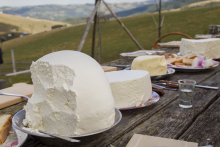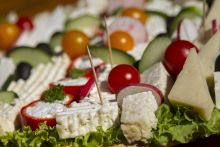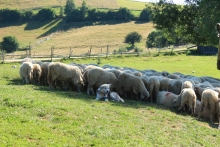General information
Information in local language
The Cheese Route: Boiţa -Tălmăcel- Sadu-Râu Sadului- Sibiu - Răşinari-Gura Râului-Poplaca - Orlat – Sălişte – Galeş – Rod-Tilişca - Poiana Sibiului – Jina - Transalpina
Tălmăcel: The village is renowned for the custom of “The Bathing of the Johns”, an ancient feast celebrated on the 7th of Januay
Sadu: Mountain village, a hydro-power pioneer. During your visit, you should not miss out on Sadu I Energy Museum. Râu Sadului is a commune made up of four hamlets with traditional houses, orchards, huts and sheepfolds scattered among mountain peaks.
Sibiu: The ASTRA Traditional Folk Civilization Museum is the biggest open-air museum in Romania, the ideal place to discover traditional Romanian rural lifestyle.
Răşinari: Is the birthplace of philosopher Emil Cioran and poet Octavian Goga. Yous should visit the 18th century Orthodox Church and the ethnographic museum.
Gura Râului: This charming village still keeps the tradition of the “commands” - on Sunday after church service the entire village gathers in front of the church where the mayor announces the news.
Poplaca: Traditional Romanian village known for its Căluşari dancers.
Orlat: It's first inhabitants were the Romanians who built defence towers on the surrounding heights. Today, these heights provide a delightful scenic view of the neighbourhoods.
Sibiel: Mountain village with a long agritourism tradition. Visit the collection of the Glass Icons Museum.
Fântânele: Quaint village hidden in the mountains with old houses and large orchards.
Sălişte: Remarkable thanks to its architecture which combines urban and rural styles, traditions and cultural heritage. It is the town with the largest number of craftsmen: tanners, coopers, hatters, weavers or glass icons painters.
Galeş: One of the “most beautiful villages of Romania” with old shingle-covered houses, porches and massive wooden gates, narrow streets - a tranquil atmosphere, just perfect for a relaxing walk.
Rod: Placed at 815 m of altitude, the village is a starting point for hikes to the surroundings. Regardless of the chosen route, your stroll will take you along meadows, huts, orchards and flocks of sheep scattered on the heights.
Tilişca: The Căţânaş Hill holds the ruins of a former Dacian citadel. In the village you may visit the ethnographic museum.
Poiana Sibiului: Shepherds’ village with imposing houses, very atypical for Romanian mountain villages.
Jina: The highest village from Mărginimea Sibiului (900 m). Visit the ethnographic museum of the Morariu family - an ancient collection, a warm host, a story of pastoral civilization



